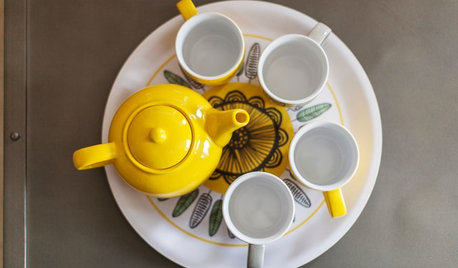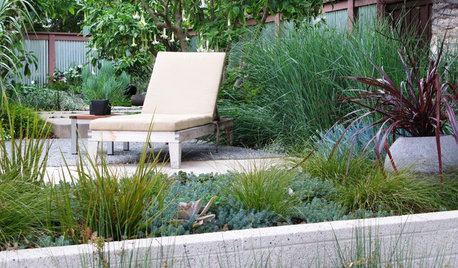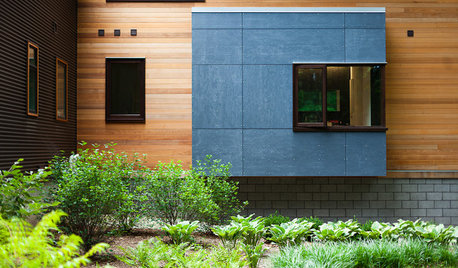Screening gritty mix
asaund
13 years ago
Related Stories

GARDENING GUIDESVegetables and Flowers Mix in Beautiful Edible Gardens
Ornamentals, meet your edible garden mates. We know you'll get along just beautifully
Full Story
SHOP HOUZZShop Houzz: Spring Mix
Matching hues, varying pattern sizes and adding solids are the keys to mixing florals with other florals
Full Story
KITCHEN DESIGNNew This Week: 2 Kitchens That Show How to Mix Materials
See how these kitchens combine textures, colors and materials into a harmonious whole
Full Story
HOMES AROUND THE WORLDHouzz Tour: Gray and Yellow Mix It Up in a London Apartment
A neutral palette gets a jolt of energy from sunny accessories and witty artwork in this new unit in an industrial area
Full Story
LANDSCAPE DESIGNGet More From Your Garden by Mixing Things Up
Consider an eclectic outdoor style with defined hardscapes softened by exuberant, informal plantings
Full Story
SHOP HOUZZShop Houzz: Mix It Up With Modern Florals
Bring a soft and fresh feeling to any room with floral motifs
Full Story
DECORATING GUIDESBeautiful Living Rooms Mix Comfort and Style
Get comfy without the frumpy with these ideas for making 7 living room styles feel welcoming and relaxing
Full Story
TASTEMAKERSA New Decorating Book Celebrates Expert Style Mixing
Old-world classic, traditional and modern elements harmonize in Stephen Sills' gift-worthy new decorating book
Full Story
COLOR PALETTESMaster the Metallic Mix of Gold and Silver
More than just hardware is gleamworthy in a home. Marrying metallics with walls, ceilings, furniture and accessories makes your rooms glow
Full Story
REMODELING GUIDESExterior Materials Mix It Up
Rarely does a single material cover a whole home. Check out these architectural designs that meld exterior finishes beautifully
Full Story







jojosplants
jodik_gw
Related Professionals
Citrus Heights Landscape Architects & Landscape Designers · Hershey Landscape Architects & Landscape Designers · Soddy Daisy Landscape Contractors · Spring Landscape Contractors · Hercules Solar Energy Systems · Sun Prairie Solar Energy Systems · Swansea Solar Energy Systems · Baltimore Window Contractors · Wichita Window Contractors · Mamaroneck Window Contractors · Ruskin Window Contractors · Hialeah Gardens Window Contractors · Fountain Fence Contractors · Oregon City Fence Contractors · Tucson Fence ContractorsasaundOriginal Author
tapla (mid-Michigan, USDA z5b-6a)
asaundOriginal Author
tapla (mid-Michigan, USDA z5b-6a)
tapla (mid-Michigan, USDA z5b-6a)
jodik_gw
asaundOriginal Author
asaundOriginal Author
jodik_gw
asaundOriginal Author
jodik_gw
tapla (mid-Michigan, USDA z5b-6a)
asaundOriginal Author
tapla (mid-Michigan, USDA z5b-6a)
asaundOriginal Author
jodik_gw
asaundOriginal Author
andetuna
tapla (mid-Michigan, USDA z5b-6a)
jodik_gw
andetuna
asaundOriginal Author
tapla (mid-Michigan, USDA z5b-6a)
asaundOriginal Author
tapla (mid-Michigan, USDA z5b-6a)
asaundOriginal Author
tapla (mid-Michigan, USDA z5b-6a)
andetuna
greenman28 NorCal 7b/8a
tapla (mid-Michigan, USDA z5b-6a)
lilamy
tapla (mid-Michigan, USDA z5b-6a)
jodik_gw
margo_k
jodik_gw
jojosplants
jodik_gw
margo_k
margo_k
margo_k
queensinfo
tapla (mid-Michigan, USDA z5b-6a)
queensinfo
tapla (mid-Michigan, USDA z5b-6a)
mgbeheler
rina_Ontario,Canada 5a
joshuac1v8